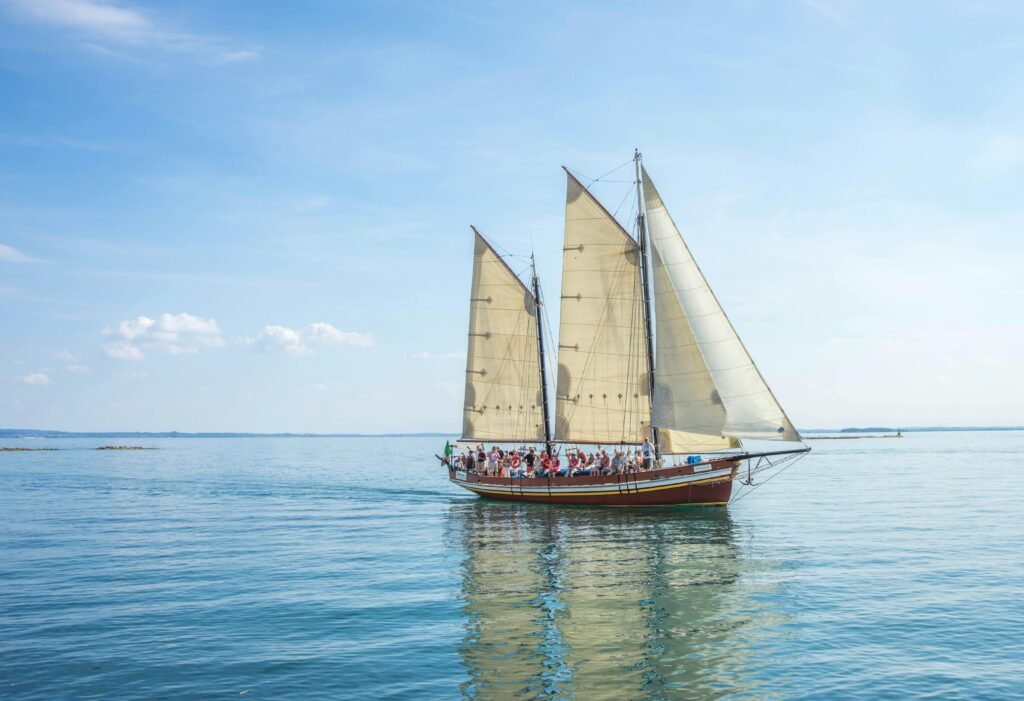
This is a 5 step guide to accompany you on your journey to becoming a confident and capable Sailor through a Competent Crew Curriculum.
While Following the curriculum for a Competent Crew, I hope to give you a good guide on a pathway to take you from “Land-lubber” to actually being useful as a crew member onboard a sailing boat.
There is a kind of freedom that can only really be found out on the water, under sail. Using the elements to move your vessel through the water, chartering a course, using your wits, cunning and sense of courage while taking calculated risks.
The act of sailing binds you physically and spiritually to the elements around you. You sense and feel your place in the world, being constantly reminded of your direct action on your environment.
Your progress is immediately determined by you, your decisions and your actions. This is a wonderful metaphor for life in general and humbles you with a greater perspective.
Here we run through the basics and give you a road map for becoming capable and confident sailor.
– So what is the Competent Crew Certificate?
This is an entry level course for complete beginners.
Let’s have a look at the Competent Crew Course delivered by the RYA (https://www.rya.org.uk/training/courses/Competent-Crew-Practical-Course-CCCC)
(From the RYA) The content includes: Knowledge of sea terms and parts of a boat, her rigging and sails, sail handling, ropework, fire precautions and fighting, personal safety equipment, man overboard, emergency equipment, meteorology, seasickness, helmsmanship, general duties, manners
It is usually completed in the course of 5 days and enables you to show your capabilities to be able to crew on a sailing boat.
Here is a suggestion for how to structure your learning over 5 weeks. We will be going deeper into each of these topics in future posts.
Competent Crew Preparation Course:
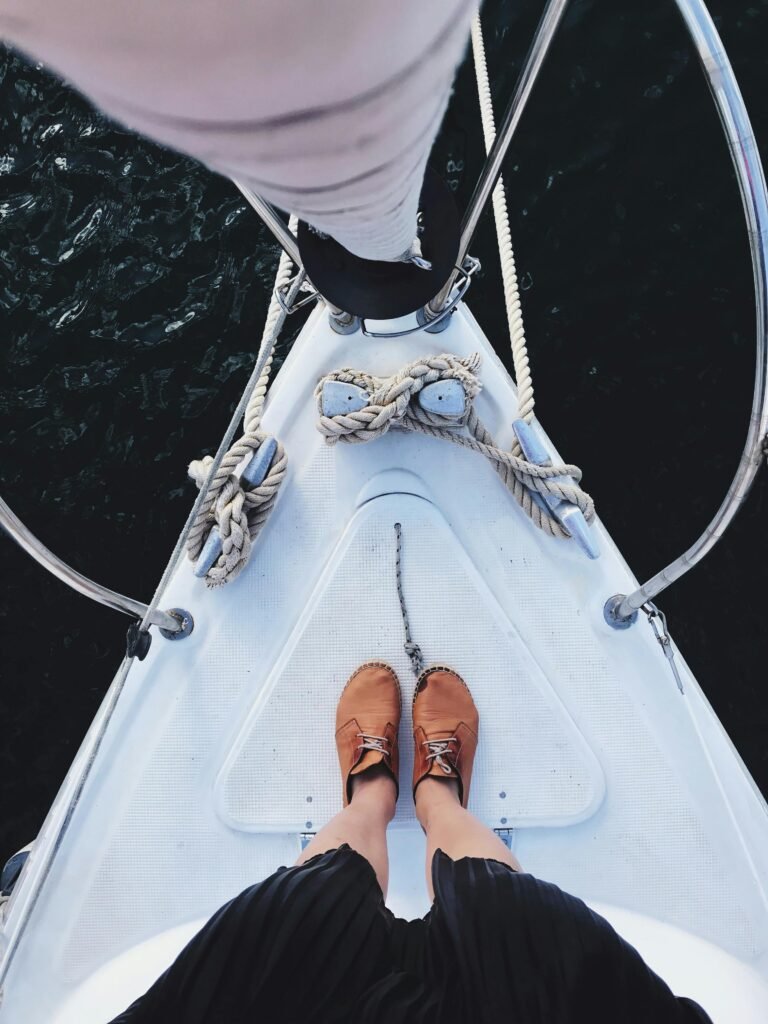
Phase 1: Introduction to Sailing & the Boat (Week 1)
Learning Objectives:
- Get familiar with the boat and basic sailing terminology
- Understand your role as a crew member
- Begin developing spatial awareness and comfort aboard
Topics:
- Parts of a sailboat: hull, deck, rigging, sails, keel, rudder
- Basic sailing terms: port/starboard, bow/stern, windward/leeward
- Types of sailboats and rigs
- Safety briefing & rules aboard
- Basic knots: bowline, clove hitch, figure-eight, cleat hitch
Practical Skills:
- Boarding/disembarking safely
- Moving safely around the boat (handholds, balance)
- Wearing a life jacket and safety harness
- Stowing gear and understanding personal responsibility aboard
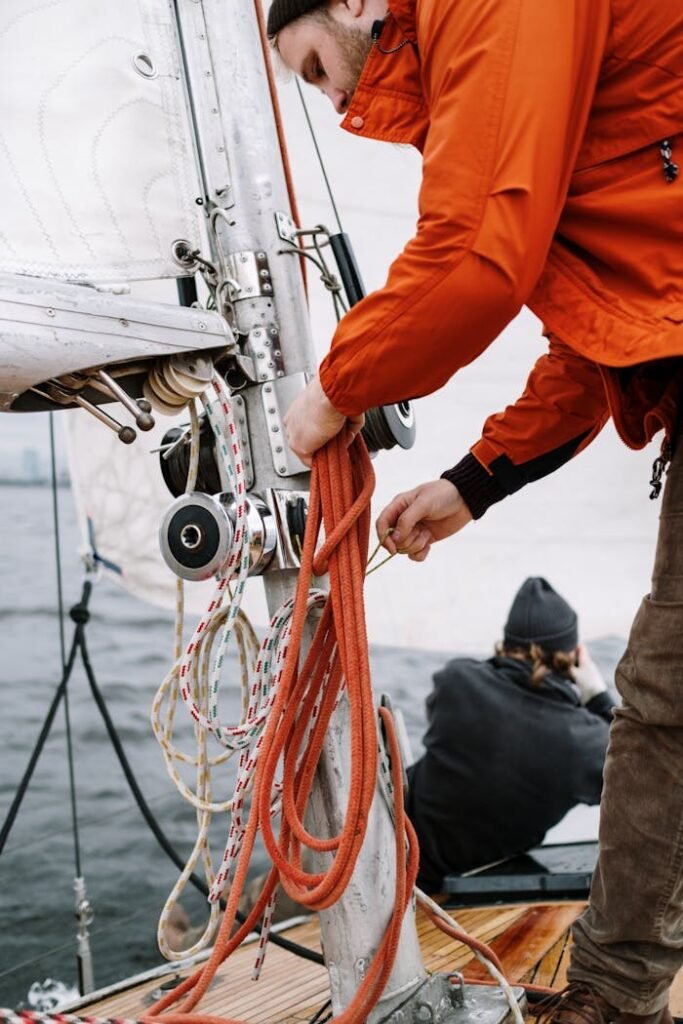
Phase 2: Sail Handling & Basic Sailing Skills (Week 2)
Learning Objectives:
- Learn how to help hoist, trim, and lower sails
- Understand how the wind powers the boat
- Start participating in maneuvers like tacking and gybing
Topics:
- Points of sail (no-sail zone, close-hauled, beam reach, broad reach, run)
- Apparent vs. true wind
- Parts of the sail: luff, leech, foot, tack, clew
- Winches, cleats, halyards, and sheets
- Basic helm commands (e.g., “Ready to tack”, “Helm to lee”)
Practical Skills:
- Assisting in sail hoisting/lowering
- Trimming the jib and main
- Tacking and gybing with the crew
- Reefing sails in stronger winds
- Coiling and securing lines properly
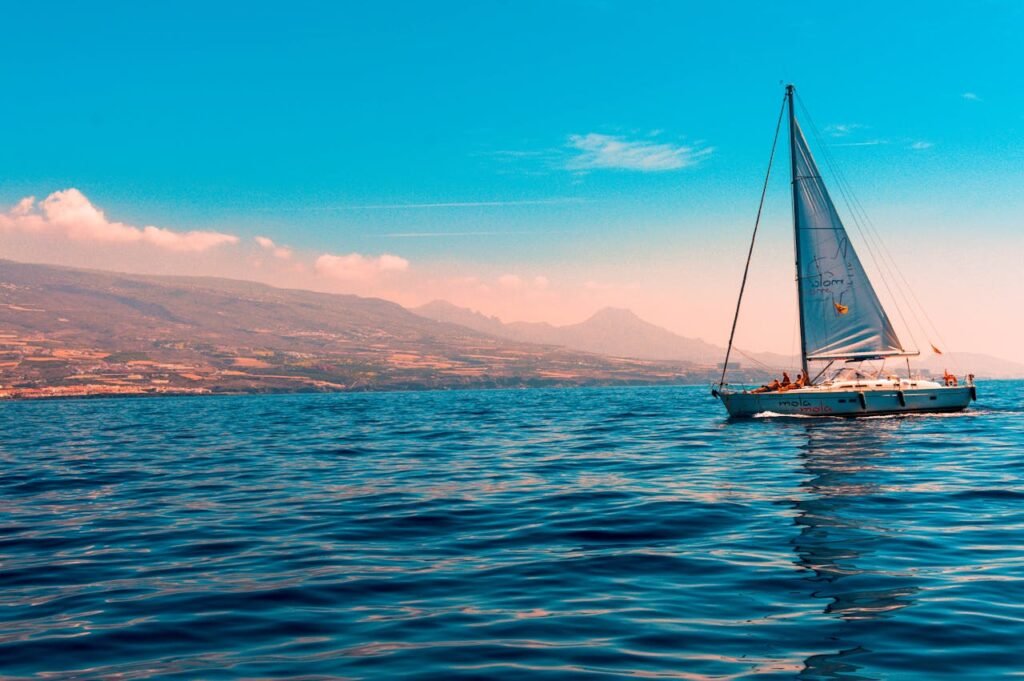
Phase 3: Boat Handling, Steering & Navigation (Week 3–4)
Learning Objectives:
- Start steering under sail and power
- Understand basic navigation and how to read a chart
- Learn how to assist in anchoring and docking
Topics:
- Steering techniques under sail and engine
- Compass use and basic chart reading
- Understanding tides, current, and wind effects
- Anchoring principles (types of anchors, scope)
- Lines and fenders for docking
Practical Skills:
- Taking the helm and holding a course
- Basic navigation plotting
- Anchoring procedures
- Coming alongside and securing the boat
- Line handling during docking

Phase 4: Safety, Emergencies & Seamanship (Week 5)
Learning Objectives:
- Understand core safety procedures and drills
- Prepare to act in emergencies like MOB (man overboard)
- Learn how to contribute to good seamanship aboard
Topics:
- Man overboard (MOB) procedure
- Use of lifejackets, flares, VHF radio (basic distress call knowledge)
- Fire prevention and firefighting
- Weather awareness (clouds, fronts, storm signs)
- Basic first aid and hypothermia prevention
- Rules of the Road (COLREGS – basic collision avoidance)
Practical Skills:
- Participating in a MOB drill
- Demonstrating safety equipment knowledge
- Helping with emergency procedures
- Practicing basic VHF radio usage (Channel 16, DSC)
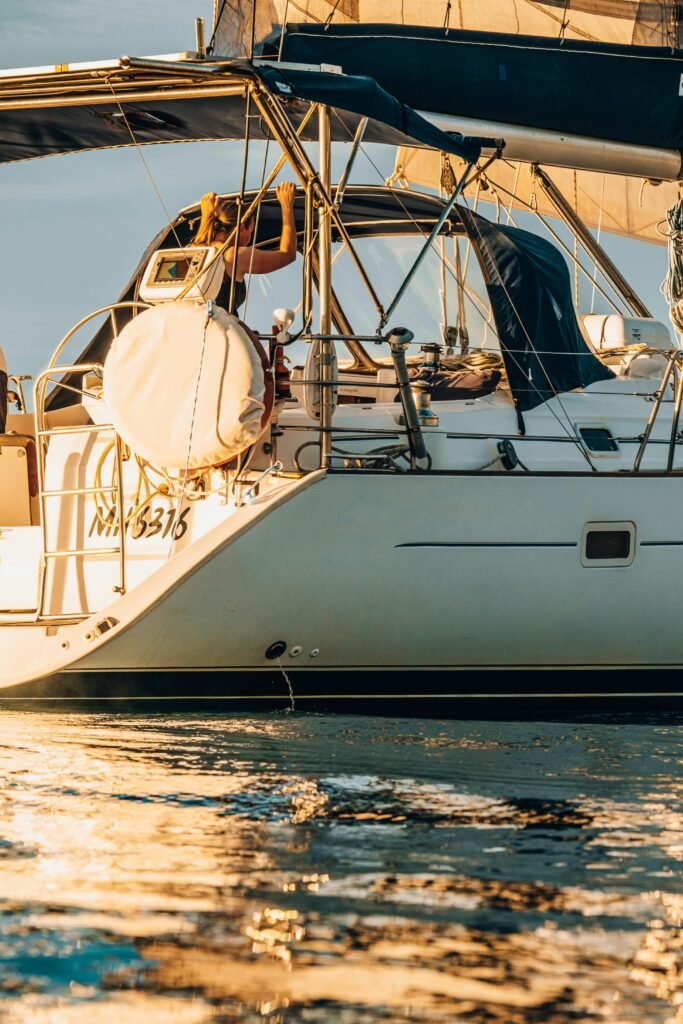
Phase 5: Living Aboard, Watchkeeping & Crew Etiquette (Ongoing)
Learning Objectives:
- Become a trusted member of the crew on multi-day passages
- Understand watch systems and night sailing
- Learn the etiquette and expectations of crew life
Topics:
- Galley safety & cooking underway
- Keeping a lookout and maintaining logbooks
- Sleep cycles and handling fatigue
- Cleanliness, respect, and communication aboard
- Environmental awareness and sustainable sailing practices
Practical Skills:
- Standing watch (day/night)
- Maintaining the boat’s log
- Preparing meals safely underway
- Adapting to confined, shared living spaces
Final Goal: Competent Crew Proficiency
By the end of this curriculum, the student should be able to:
- Understand sailing theory and perform common crew tasks confidently
- Assist in sail handling, anchoring, docking, and emergencies
- Communicate effectively using nautical terminology
- Be a reliable and safety-conscious member of any coastal sailing crew
I hope you found this guide helpful. We will be going deeply into each of the topics in coming posts.
Until then, Fair Winds and Following Seas…
If you liked this post, check out our other articles:
The 12 Best Sailing Youtube Channels
The Main Types of Boat Keel That You Need to Know

